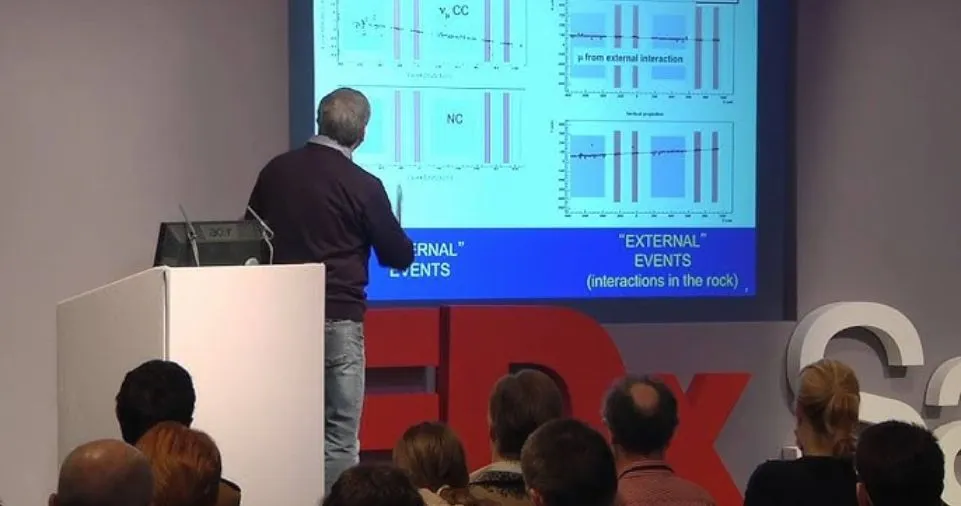When it comes to decision-making, multidimensional thinking stands out as an invaluable approach that allows you to view situations from multiple angles.
This method involves going beyond your immediate viewpoint to understand various perspectives, ultimately helping you make informed choices in complex scenarios.
This article delves into multidimensional thinking, its benefits, practical techniques, and how you can adopt this mindset to enhance your problem-solving abilities.
What is Multidimensional Thinking?
Multidimensional thinking refers to analyzing a situation through multiple lenses to understand it more comprehensively.
This practice involves looking at each component of a scenario from different perspectives, rather than drawing conclusions based solely on one viewpoint.
In essence, it encourages you to explore all potential factors that might influence a situation, providing you with a well-rounded understanding before making any decisions.
Why is Multidimensional Thinking Important?

Multidimensional thinking is crucial in today’s world, where personal, social, and professional challenges are rarely one-dimensional.
By expanding your thinking capacity to include multiple perspectives, you can avoid hasty judgments, enhance your relationships, and make decisions that benefit all parties involved.
This approach builds empathy, promotes conflict resolution, and fosters innovative solutions.
| Benefits of Multidimensional Thinking | Explanation |
|---|---|
| Informed Decision-Making | You make decisions based on a holistic view rather than limited perspectives. |
| Enhanced Problem-Solving | Identifying various factors helps you break down complex problems into manageable parts. |
| Increased Empathy | Seeing things from others’ viewpoints builds compassion and understanding. |
| Reduced Conflict | By addressing the needs of all involved, multidimensional thinking helps minimize misunderstandings. |
| Greater Adaptability | This approach encourages flexible thinking, which is crucial in dynamic environments. |
Techniques to Enhance Multidimensional Thinking
Here are several techniques you can use to cultivate multidimensional thinking.
Each strategy helps you practice viewing a problem from various angles, ultimately refining your decision-making process.
Perspective-Taking
Perspective-taking involves actively considering other people’s viewpoints.
This method requires you to listen without bias, allowing you to understand how others perceive the situation.
For example, if you’re dealing with a workplace conflict, understanding your colleague’s viewpoint can reveal aspects you might have overlooked, ultimately helping you arrive at a balanced solution.
Mind Mapping
Mind mapping helps you visually organize your thoughts. Start with the main issue in the center and branch out into different subtopics or viewpoints surrounding it.
This approach enables you to see the issue from multiple perspectives while keeping track of each element’s relationship with others.
| Steps for Mind Mapping | Explanation |
|---|---|
| Identify the Main Issue | Place the main problem or question at the center of the map. |
| Create Subtopics | Branch out with related subtopics to see how different elements connect. |
| Consider Multiple Perspectives | Use different branches to include perspectives from each involved party. |
| Review and Adjust | Refine your map as you consider new information, adding branches for clarity. |
Scenario Analysis
Scenario analysis involves imagining different outcomes based on the decisions you might make.
By mentally exploring each scenario, you can better understand the potential consequences and how they would impact everyone involved.
For example, if you’re deciding between two job offers, think about the long-term implications of each role on your career, work-life balance, and personal development.
Cross-Disciplinary Insights
Drawing on knowledge from other fields can foster multidimensional thinking.
For instance, understanding basic psychological principles can help you navigate interpersonal relationships with greater empathy.
If you’re facing a business problem, learning from environmental sciences or economics could reveal sustainable, cost-effective solutions that others might miss.
Brainstorming with Diverse Groups
Gathering ideas from individuals with varying backgrounds can add a wealth of perspectives to your thought process.
During brainstorming sessions, encourage participants to share unique viewpoints and refrain from judgment, allowing creative solutions to emerge naturally.
Time-Dimension Analysis
Time-dimension analysis involves examining how a problem or decision evolves over time.
By looking back at when the problem originated, you can recognize patterns and identify recurring issues.
For example, if you notice that team morale dips every quarter, you can investigate why this happens and create strategies to counter it.
Risk vs. Benefit Evaluation
Assessing the risks and benefits of each choice allows you to weigh your options carefully.
In a business setting, understanding the potential gains and drawbacks of a decision can prevent you from making costly mistakes.
By considering these factors from multiple perspectives, you ensure your choices align with long-term goals.
Real-Life Applications of Multidimensional Thinking

Applying multidimensional thinking in real-life situations can make a noticeable difference. Here are some common scenarios where this approach proves beneficial:
Workplace Conflicts
Consider a conflict where two employees disagree on how to approach a project. By using multidimensional thinking, you can mediate by understanding each person’s rationale.
When you view their perspectives, you may uncover underlying issues, such as workload stress or differing work styles, that can be resolved collaboratively.
Family Decisions
In personal life, you often face decisions that affect multiple family members. Imagine deciding whether to relocate for a new job.
By considering how this move would affect your family’s routines, finances, and social lives, you can make a choice that balances everyone’s interests.
| Decision-Making Factors | Family Relocation Example |
|---|---|
| Financial Stability | Will the new job’s income outweigh moving costs and potential disruptions? |
| Family Wellbeing | How will the move affect the family’s social connections and support systems? |
| Career Growth | Does the new role align with your long-term professional goals? |
Community Projects
For anyone involved in community work, multidimensional thinking aids in understanding diverse community needs. Suppose a city council is planning to build a park.
By involving local residents, business owners, and environmentalists, the council can ensure that the park serves everyone’s needs, from providing recreation to preserving green space.
Developing Multidimensional Thinking Skills
Improving your multidimensional thinking skills takes consistent effort, reflection, and openness to new ideas. Here are some practical steps to guide your development.
Practice Active Listening
Active listening requires you to fully engage with what someone is saying without forming immediate judgments.
When you actively listen, you understand the speaker’s intentions and gain valuable insights into their perspective.
Keep a Journal for Reflection
Reflecting on your decisions and thought processes is a great way to develop multidimensional thinking.
Consider writing down your experiences, the perspectives you considered, and what you learned from each situation.
This habit can help you identify recurring patterns in your approach and areas where you can expand your perspective.
Embrace Diverse Experiences
Experiencing new cultures, workplaces, and social environments naturally enhances your multidimensional thinking.
By exposing yourself to various ways of life, you gain a broader understanding of how others see the world, which will ultimately enrich your problem-solving approach.
Seek Feedback
Receiving feedback is a valuable practice in multidimensional thinking. Ask for constructive criticism on your approach from trusted individuals.
This feedback can help you identify potential blind spots in your thinking and broaden your understanding of a situation.
Common Misconceptions About Multidimensional Thinking

Although multidimensional thinking is highly beneficial, certain misconceptions can create obstacles for those who try to adopt this approach.
| Misconception | Reality |
|---|---|
| “It’s Just About Seeing Different Opinions” | Multidimensional thinking involves critically analyzing perspectives to find a deeper understanding. |
| “Only Professionals Need It” | This skill is valuable in everyday life, from personal decisions to managing family dynamics and community issues. |
| “It’s Too Complicated to Learn” | Like any skill, it improves with practice. Start small by applying it to minor decisions and build from there. |
ALSO READ
Conclusion
Multidimensional thinking equips you to approach complex situations with a comprehensive and empathetic mindset.
By examining issues from various perspectives, you can make well-informed decisions that benefit everyone involved.
As you integrate this approach into your life, you’ll find it increasingly natural to consider diverse viewpoints, leading to smarter, more adaptable choices.
Adopting multidimensional thinking enables you to tackle life’s challenges with confidence, empathy, and clarity, ultimately paving the way for personal growth and harmonious relationships.